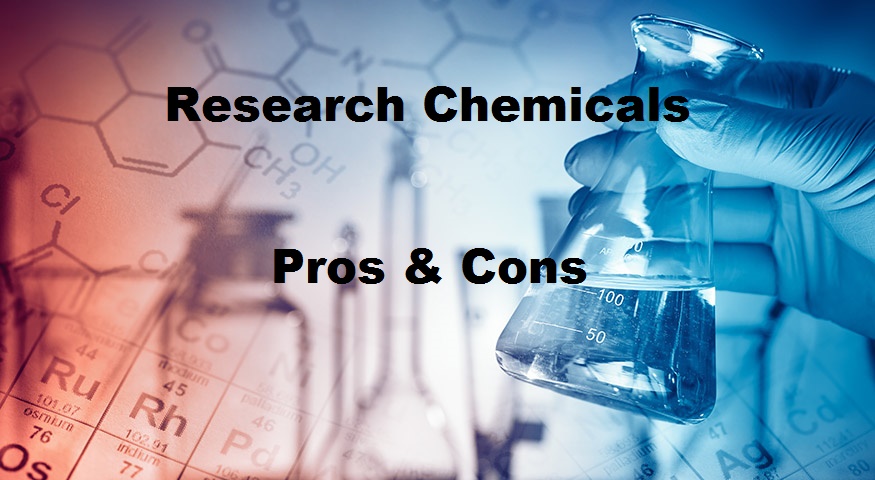
Research chemicals have become a topic of growing interest in recent years, particularly among those exploring alternative substances for scientific, recreational, or therapeutic purposes. These compounds, often synthetic and designed to mimic the effects of well-known substances, are frequently used in laboratory settings to study their effects on the human body and mind. However, their use is not without controversy. In this article, we’ll dive into the pros and cons of research chemicals, with a particular focus on 3-MMC, a popular compound in this category. We’ll also explore related topics such as legality, effects, dosage, and comparisons to other substances like 4-MMC.
What Are Research Chemicals?
Research chemicals are substances that are primarily used for scientific and medical research. They are often analogs of existing drugs, meaning they have a similar chemical structure but may produce different or more potent effects. These chemicals are typically not approved for human consumption, and their safety profiles are often poorly understood. Despite this, they have gained popularity in certain circles due to their unique effects and accessibility.
One of the most talked-about research chemicals is 3-MMC (3-Methylmethcathinone), a synthetic stimulant and entactogen. It’s often compared to its cousin, 4-MMC (mephedrone), due to their similar effects. If you’re curious about the differences between these two compounds, check out our detailed comparison in 3-MMC vs 4-MMC.
The Pros of Research Chemicals
1. Potential for Scientific Discovery
Research chemicals like 3-MMC are invaluable tools for scientists studying the human brain and behavior. They can provide insights into how certain compounds interact with neurotransmitters, potentially leading to breakthroughs in treating mental health conditions such as depression, anxiety, and PTSD.
2. Novelty and Exploration
For those interested in exploring altered states of consciousness, research chemicals offer a unique experience. Users often report feelings of euphoria, increased sociability, and heightened sensory perception. If you’re curious about what to expect, our 3-MMC reviews provide firsthand accounts of user experiences.
3. Accessibility
In some regions, research chemicals are more accessible than traditional recreational drugs. This is partly due to their legal status, which varies widely across countries. For more information on the legal landscape, read our article on the legality of 3-MMC.
4. Customizable Experiences
Research chemicals often come in various forms and dosages, allowing users to tailor their experiences. For example, the optimal 3-MMC dosage can vary depending on individual tolerance and desired effects.
The Cons of Research Chemicals
1. Unknown Long-Term Effects
One of the biggest risks associated with research chemicals is the lack of long-term studies. Since these substances are relatively new, their potential for causing harm over time is largely unknown. This makes them particularly dangerous for regular use.
2. Legal Risks
The legal status of research chemicals is a gray area in many countries. While some are legal to possess for research purposes, others are outright banned. This can lead to legal consequences for those caught using or distributing them. For a deeper dive into this topic, check out our article on the legality of 3-MMC.
3. Health Risks
Research chemicals can have unpredictable effects on the body and mind. Side effects may include increased heart rate, anxiety, paranoia, and even more severe reactions like seizures or organ damage. Understanding the effects of 3-MMC can help users make informed decisions, but the risks remain significant.
4. Addiction Potential
Many research chemicals, including 3-MMC, have a high potential for addiction. Their stimulating and euphoric effects can lead to repeated use, which may result in dependence and withdrawal symptoms.
Key Considerations Before Using Research Chemicals
If you’re considering experimenting with research chemicals, it’s crucial to weigh the pros and cons carefully. Here are some key factors to keep in mind:
1. Know the Substance
Not all research chemicals are created equal. Understanding the specific compound you’re dealing with is essential. For example, if you’re curious about the differences between 3-MMC, 2-MMC, and 4-MMC, our article on the difference between 3-MMC, 2-MMC, and 4-MMC provides a comprehensive breakdown.
2. Start with a Low Dose
If you decide to proceed, always start with a low dose to gauge your body’s reaction. Our guide on optimal 3-MMC dosage can help you determine a safe starting point.
3. Be Aware of Duration
The effects of research chemicals can last anywhere from a few hours to an entire day. Knowing how long a substance like 3-MMC lasts can help you plan your experience and avoid unexpected situations. Learn more in our article on how long 3-MMC lasts.
4. Prioritize Harm Reduction
Always use research chemicals in a safe environment and with trusted individuals. Avoid mixing them with other substances, and stay hydrated. If you experience adverse effects, seek medical attention immediately.
Conclusion
Research chemicals like 3-MMC offer a fascinating glimpse into the world of synthetic compounds, with potential benefits for both scientific research and personal exploration. However, they also come with significant risks, including unknown long-term effects, legal issues, and health concerns.
Before experimenting with any research chemical, it’s essential to educate yourself thoroughly. Explore resources like our articles on 3-MMC reviews, the legality of 3-MMC, and 3-MMC vs 4-MMC to make informed decisions.
Ultimately, the choice to use research chemicals is a personal one, but it should always be approached with caution, respect, and a commitment to harm reduction. Stay safe, stay informed, and remember that your health and well-being should always come first.
